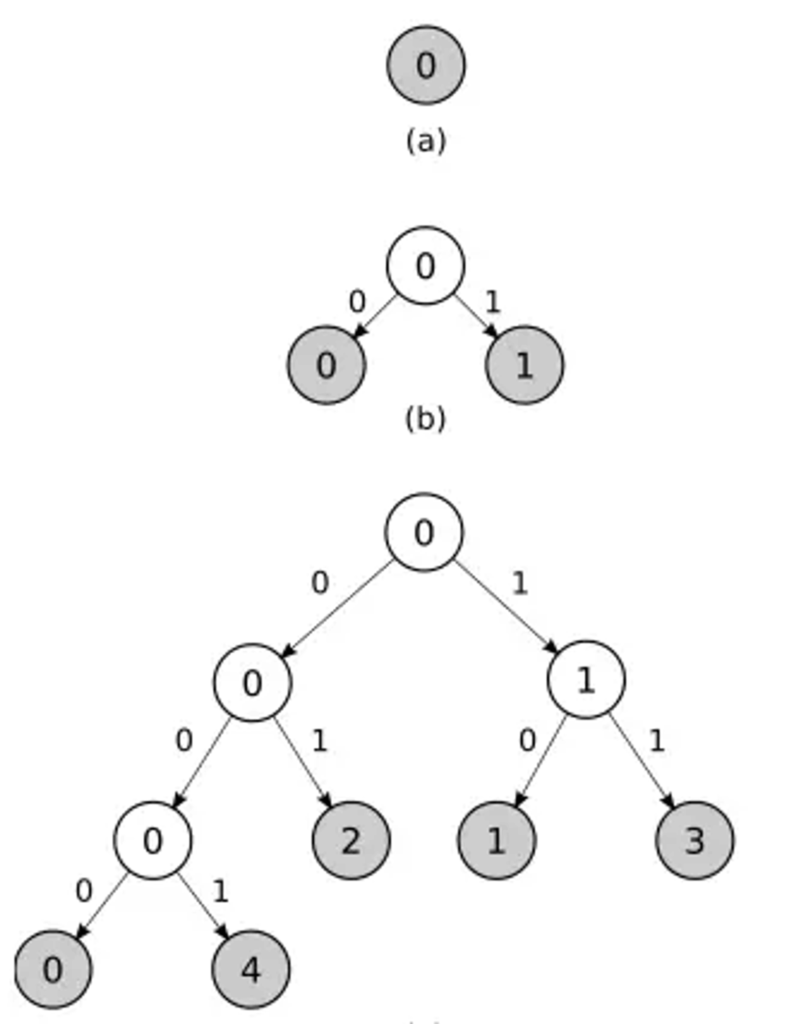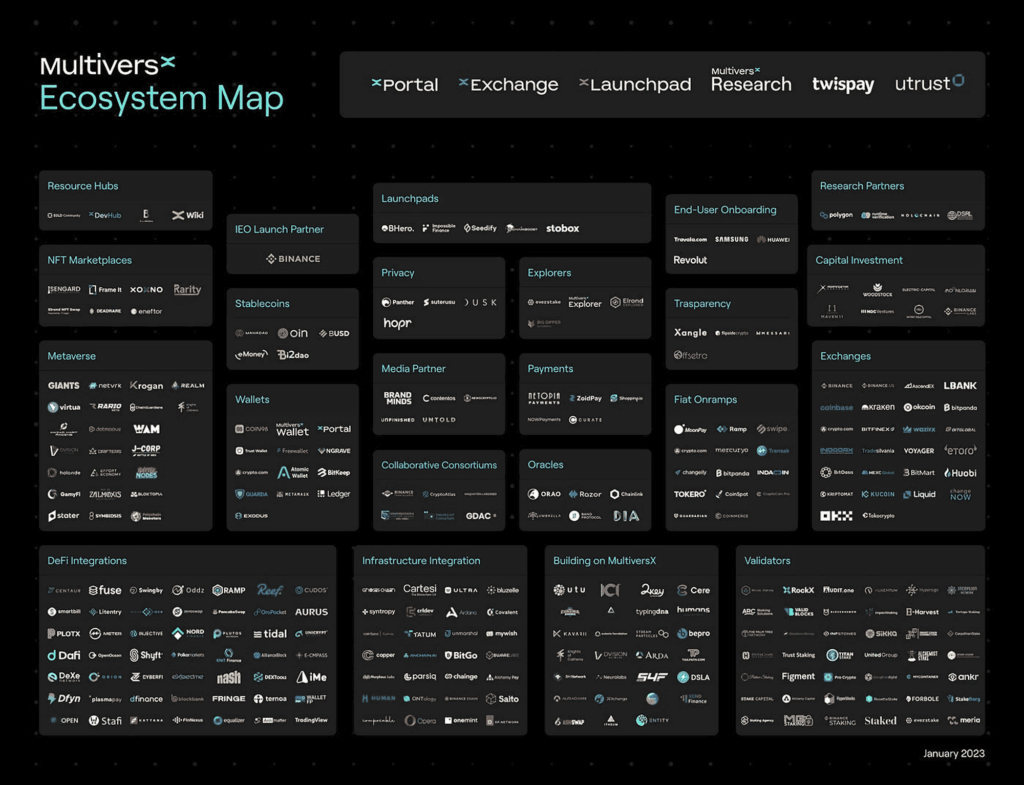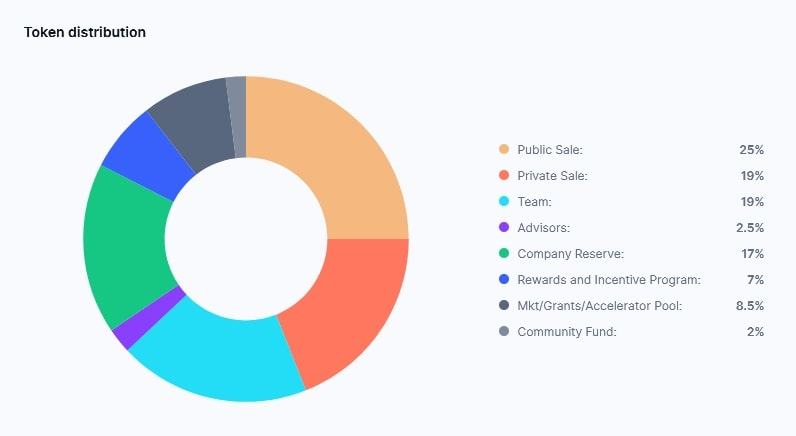Blockchain technology is known for its benefits in processing transactions quickly, transparently, and securely. However, as the technology has evolved, it has encountered the blockchain trilemma, a challenge that can make transactions less secure and slower. To address this issue, MultiversX, formerly known as Elrond, offers its innovative solution through blockchain sharding technology, which is said to facilitate faster transactions, provide high levels of security, and incur low costs. Learn more about MultiversX in this article.
Market Analysis Summary
- ⛓️ MultiversX (formerly known as Elrond) is a blockchain platform focused on transaction processing using secure proof-of-stake consensus and adaptive state sharding.
- 🚀 MultiversX claims to be capable of processing 15,000 to 30,000 transactions per second, a significant increase over Bitcoin, which can only process seven transactions per second.
- 🥉 As of November 1, 2023, MultiversX’s native token, eGold (EGLD), is ranked #52 on Coinmarketcap with a market capitalization of $780,556,774.
- ☁️ MultiversX entered into a strategic partnership with Google Cloud to strengthen its Web3 presence, particularly in terms of data analytics and artificial intelligence capabilities within the Google Cloud ecosystem.
What Is MultiversX?
MultiversX is a blockchain platform designed to provide a fast and scalable solution specifically for the needs of finance, business, and a range of other applications. With a vision centered on fostering a harmonious relationship between the physical and metaverse worlds, MultiversX seeks to create a multiverse where both realms can thrive and complement each other, rather than serve as substitutes.
As a platform, MultiversX is positioning itself as a key player in the new Internet economy, with a strong emphasis on enterprise solutions and decentralized applications (Dapps), all made possible by its exceptional scalability.
One of the key features that sets MultiversX apart from other blockchain networks is its transaction speed and efficiency. Through the use of sharding technology, MultiversX achieves remarkably fast transaction speeds, capable of handling 15,000-30,000 transactions per second. In addition, the platform offers a latency of only six seconds and very low transaction costs of only $0.001 per transaction.
With the rebranding of EGLD to MultiversX, three new Metaverse-based products have been introduced in the ecosystem. These products are xFabric, xPortal, and xWorlds.
Who Is The Founder of MultiversX?

MultiversX, which originally launched in 2017 under the name Elrond, was founded by Lucian Todea and two brothers, Beniamin and Lucian Mincu. The Mincu brothers were previously founders of the digital asset investment fund MetaChain Capital. MultiversX was founded with a focus on speed and scalability. In June 2019, the MultiversX team successfully raised over $2 million in a private funding round.
Considering that the Mincu brothers’ previous project specialized in ICO data aggregation, Elrond’s own ICO was able to raise over US$3.2 million by selling 25% of the total ERD supply. Subsequently, in 2020, ERD was rebranded as eGold (EGLD) with a focus on scalable application networks. This rebranding helped popularize it for more complex decentralized projects and fostered the growth of various platforms within the MultiversX ecosystem.
How does MultiversX Work?
The functionality of MultiversX revolves around two main aspects: Secure Proof of Stake (SPoS) and its unique adaptive state-sharding methodology. These methods work together to enable MultiversX to process transactions much faster than its competitors.
Adaptive State Sharding

The adaptive state sharding mechanism works through three types, including
- State sharding: In this approach, the “state” or overall network history is divided into multiple “shards” or different network segments. Each shard maintains its own history, and nodes (computers connected to the network) only need to store the state of the shard to which they belong, reducing the storage capacity required.
- Transaction sharding: transactions are mapped to shards for processing based on criteria such as the sender’s address, with each shard processing transactions in parallel with others. In this scenario, each node maintains a record of the state of the entire network.
- Network sharding: This involves managing how nodes are grouped into shards and can optimize communication by sending messages to nodes within a shard much faster than to the entire network.
Adaptive state sharding is a scalability solution that improves communication within shards while improving network performance and efficiency. This is achieved by integrating all three types of sharding into a solution that enables parallel processing at all levels. Every 24 hours, one-third of the nodes validating transactions in each shard move to a new shard. This mechanism can prevent collusion among validators in each shard.
Secure Proof-of-Stake (SPoS)
SPoS, or Secure Proof of Stake, is an approach used by MultiversX to achieve consensus within the network. SPoS works to reduce the waste of energy that occurs in PoW (Proof of Work) systems.
Like other PoS networks, individuals who stake more and who have staked their currency for a longer period of time have a greater chance of being selected. The system also randomly selects validators (individuals who help verify transactions), ensuring that the decision-making group is not too large to increase efficiency and security.
To maintain a high level of security, SPoS randomly selects the decision-making group and randomly shuffles the positions of individuals within that group. This is done to prevent groups of people from colluding unfairly. In addition, the system uses a special method to ensure that this random process is fair and unpredictable, giving everyone an equal and honest opportunity to participate.
MultiversX Architecture
Within the MultiversX network, there are four architectures that complement the way MultiversX works, including
- Validators: Validators are nodes in the MultiversX network that process transactions and secure the network by participating in the consensus mechanism in exchange for protocol rewards and transaction fees. To join the MultiversX network, a validator must provide collateral in the form of EGLD tokens, which are staked to align the validator’s incentives with the network’s goals. Validators risk losing their stake if they collude to disrupt the network.
- Observers: These passive network members can read and forward interfaces. Observers can be “full,” storing the entire blockchain history, or “light,” storing only two epochs of the blockchain. Observers do not need to stake EGLD tokens to join the network and are not compensated for their participation.
- Fisherman: After a block is proposed, these nodes verify its validity. Validators challenge invalid blocks caused by malicious actors and are eventually rewarded for their efforts. Validators who are not part of the current consensus round or observers can take on the role of fisherman.
Platforms in the MultiversX Ecosystem

1. EGLD Token
At the heart of MultiversX is its native token, EGLD (Electronic Gold). EGLD serves as a coin to pay transaction fees and facilitate exchanges between users on the platform. In addition, EGLD acts as a governance token, allowing its holders to participate in network decisions.
2. xPortal
xPortal is a super-application that allows users to manage crypto assets, from sending and receiving fiat payments to managing crypto-fiat debit cards, non-fungible tokens (NFTs) and digital identities.
3. xFabric
xFabric is a blockchain infrastructure that supports the new metaverse world of MultiversX. It allows users to create blockchain applications without any programming knowledge.
4. xWorlds
xWorlds supports multiple metaverses and is the first operational metaverse network on the blockchain. It serves as an engine for developers and gamers to create their own immersive digital worlds.
5. xExchange
Formerly known as Maiar Exchange, xExchange has become a decentralized exchange dedicated to the MultiversX ecosystem. It allows users to trade cryptocurrencies and participate in pooled stakes to earn rewards.
6. xSpotlight
Formerly known as Inspire Art, xSpotlight is MultiversX’s Web3 cultural hub that allows users to buy, sell, create and showcase NFTs.
7. xExplorer
Known as Elrond Explorer, xExplorer is MultiversX’s block explorer. Similar to Etherscan in the Ethereum network, xExplorer is used to track transactions within the MultiversX ecosystem.
8. xLaunchpad
Formerly Maiar Launchpad, this platform allows developers to create Web3 projects within the MultiversX ecosystem.
9. MultiversX Wallet
The non-custodial wallet of the MultiversX ecosystem, formerly known as Elrond Wallet.
10. MultiversX Bridge
A blockchain bridge that allows users to move funds from the Ethereum or Binance Smart Chain networks to the MultiversX network.
EGLD Token and the Future of MultiversX
As mentioned above, MultiversX’s native token is Electronic Gold (eGold), which trades under the symbol EGLD.
EGLD facilitates the operation of the MultiversX network and is used for platform governance, staking, rewards, transactions, and smart contract payments. The value of EGLD is derived from the functionality of the MultiversX network. In addition, the intrinsic value of the token is determined by its unique technology, scalability, enterprise-level solutions, and other use cases.
The price of MultiversX at the time of this writing is $29.92 with a 24-hour trading volume of over $21 million. EGLD’s ranking on Coinmarketcap as of November 1, 2023, is #52 with a market capitalization of $780,556,774. The total circulation supply of EGLD is 26,155,066 EGLD coins, and the maximum supply is 31,415,926 EGLD coins. The distribution of EGLD tokens is broken down into several percentages as follows:

The public sale holds the largest share at 25%, while the private token sale and team allocation each secure 19%. In addition, 17% of the total allocation is set aside for reserve tokens. It is expected that EGLD coins will gradually reach their maximum supply over the next decade, ensuring the sustainability and stability of the ecosystem.
Recently, MultiversX partnered with Google Cloud to strengthen its Web3 presence. The integration between BigQuery, Google Cloud’s data warehouse, and MultiversX is expected to help Web3 projects and users gain valuable insights from data analytics and artificial intelligence tools available in the Google Cloud ecosystem. This collaboration is expected to accelerate the execution of large-scale blockchain projects focused on data, making it easier for developers to access data related to addresses, transaction amounts, and smart contract interactions, and improve on-chain analytics.
Read more: What is Decentralized Cloud Storage?
Conclusion
MultiversX, formerly known as Elrond, is a blockchain platform designed to provide fast and scalable solutions, especially for needs in finance, business, and various other applications. The platform emphasizes the creation of the multiverse, a harmonious connection between the physical world and the metaverse, with the goal of creating limitless worlds filled with imagination. Transaction speed and efficiency are some of the key strengths of MultiversX, achieved through the use of sharding technology that achieves a capacity of 15,000-30,000 transactions per second, with only six seconds of latency and extremely low transaction costs. The platform has also launched three new Metaverse-based products, namely xFabric, xPortal, and xWorlds, adding to the richness of the MultiversX ecosystem.
The founding of MultiversX by Lucian Todea and two brothers, Beniamin and Lucian Mincu, in 2017 marked the beginning of their efforts to create a faster and more scalable blockchain solution. MultiversX’s method of operation involves the use of adaptive state sharding and secure proof of stake (SPoS) to achieve superior performance compared to other blockchain networks. The platform also has an architecture that includes different roles such as Validators, Observers, and Fishermen, as well as a broad protocol ecosystem that includes xPortal, xFabric, xWorlds, and others. The EGLD (Electronic Gold) token plays a critical role in network operations and has significant future growth potential.
References
- Jemimah Jones, MultiversX (Elrond) Review: How Does the EGLD Coin Work?, Coincentral, accessed on 1 November 2023.
- Koko, What Is MultiversX (EGLD)?, Ledger, accessed on 1 November 2023.
- Perseus Crypto, What Is MultiversX (EGLD)? Ex Elrond EGLD!, Binance, accessed on 1 November 2023.
- Pulsar Money, MultiversX Ecosystem Expansion, Medium, accessed on 1 November 2023.
- M6 Labs, A Deep Dive Into MultiversX, Foresightnews, accessed on 1 November 2023.
- Prashant Jha, Google Cloud teams up with MultiversX amid blockchain firm’s focus on metaverse, Cointelegraph, accessed on 1 November 2023.
